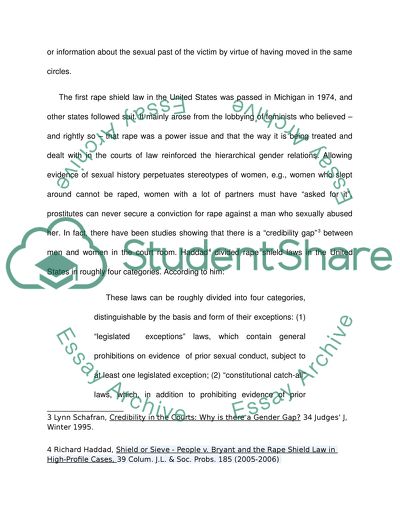Cite this document
(“Research Proposal on The Rape Shield Law Example | Topics and Well Written Essays - 2250 words”, n.d.)
Retrieved from https://studentshare.org/law/1454242-research-proposal-on-the-rape-shield-law
Retrieved from https://studentshare.org/law/1454242-research-proposal-on-the-rape-shield-law
(Research Proposal on The Rape Shield Law Example | Topics and Well Written Essays - 2250 Words)
https://studentshare.org/law/1454242-research-proposal-on-the-rape-shield-law.
https://studentshare.org/law/1454242-research-proposal-on-the-rape-shield-law.
“Research Proposal on The Rape Shield Law Example | Topics and Well Written Essays - 2250 Words”, n.d. https://studentshare.org/law/1454242-research-proposal-on-the-rape-shield-law.


